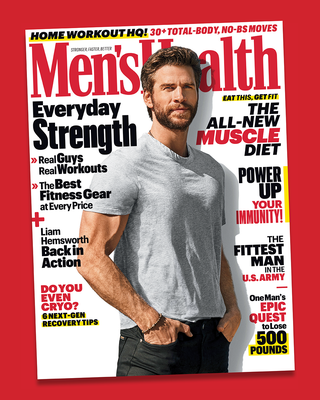Training at home without a ton of equipment can be tough, especially when it comes time to work muscles that you’d usually hit with isolation exercises. Dialing in on one specific spot like your biceps without your usual complement of gear becomes an extra challenge—yes, we know you’re missing those dumbbell curls more than just about anything—but there are solutions to help keep you swole.
If you find a home workout plan to pump up your arms that includes a ‘biceps pushup,’ variation however, it’s time for you to find a new program. The exercise is more than useless for your guns, according to Athlean-X expert Jeff Cavaliere—it can be downright risky.
The main issue with the biceps pushup is that you’re not actually using your biceps—at least not much in a manner that will stimulate muscle growth. “When we talk about the biceps, there’s a few things that it does,” Cavaliere says in a video focused on the exercise. “We know that it flexes the elbow. We know that it can supinate the forearm… and we know that the last thing in order of its preference is to help assist in shoulder flexion to bring the arm up.”
Once Cavaliere breaks down the biceps pushup, however, you can clearly see that the biceps aren’t performing any of those functions. To move from the upward position to the second position, you’re working under load to extend the elbow, which is the opposite of what you’d expect from an effective exercise for the biceps. Instead, the triceps are the primary mover (the agonist), while the biceps, if anything, serve as the antagonist of the exercise (in opposition to the work the triceps are doing).
Given the arm position of the pushup, Cavaliere acknowledges that some might argue that there’s some supination (the position you’d be in holding dumbbells in an underhand grip, with your forearms facing upward). That’s also incorrect. “Two things are happening,” he says. “Number one, when you get your hands back into the position, you’re locking them in place—so you’re not supinating under load. You’re getting into a supinated position and locking them in place.”
Cavaliere dismisses the idea of shoulder flexion as well, since the movement is so small. He does acknowledge that there is maybe some small stability contribution from the biceps, as you strain to prevent yourself from falling on your face—but the most work your biceps are getting from the exercise is from the isometric force you create as you press against the floor.
So, the biceps pushup doesn’t actually do much for your biceps. Even worse, you could be putting your wrists at risk. Cavaliere, who is a physical therapist as well as a trainer, warns that this variation is ultimately more dangerous than it’s worth. “What I see from this that’s horrible is what it does to your wrist,” he says. He points out an area of cartilage at the top of the wrist that is susceptible to injury (TFCC injury to be specific) from the force you’ll put upon it when you get into the position.
To work your biceps at home without any gear, Cavaliere recommends using your bodyweight to for exercises that hammer on the flexion of the elbow—in other words, movements that mimic that classic biceps curl. He demos two ingenious curl variations, in which you grasp your leg and flex your biceps to raise your torso off the ground. Try the movement on your side with your hand just under your hamstring, or ramp up the difficulty by lying on your back gripping your lower leg.
That’s still not terribly effective, so Cavaliere suggests getting a pullup bar for even better biceps work. Don’t have the means to get one yourself? Make a setup using some chairs and a broom or shovel (just make sure to stay safe). You can also find some new materials for beloved curls, too—get creative with the stuff you have around the house.
Just remember that flexion is the most important factor for your biceps, no matter the exercise. “Understand this: They’re all resisting the flexion part,” he said. “I’m putting the load on the elbow closing down and creating flexion, not while I’m extending it.”

Source: Read Full Article
